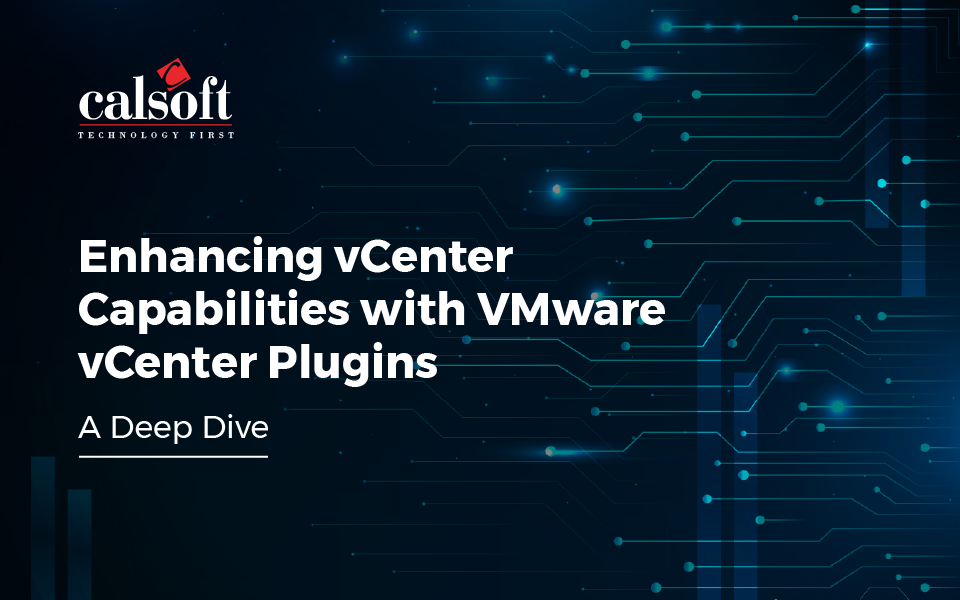vCenter Server is one of the most powerful tools in VMware’s product portfolio, enabling efficient management of virtualized environments. One of the most used features in vCenter is the vCenter plugin, which extends the capabilities by providing custom features such as 3rd Party system discovery, and provisioning, providing a unified view, allowing administrators to manage vSphere, and 3rd Party systems seamlessly. In a traditional manner of speaking, vCenter Plugins have 2 different architectures-Local Plugin Architecture and Remote Plugin Architecture
Decoding the vCenter Plugin Architectures:
VMware vCenter plugins can be built using two different architectures: local and remote. In the subsequent architecture, we will explore both architectures.
Local Plugin Architecture (Legacy):
In the local plugin architecture, the vCenter plugin is tightly integrated with the vCenter server and hosted on the same server. Introduced with vSphere 6.5, this architecture was compatible with vSphere 6.7 and vSphere 7.0. However, VMware announced that starting from vSphere 7.0, no new features would be introduced for local plugins, and they would be deprecated, eventually excluded from the VMware certification program.
Remote Plugin Architecture:
The remote plugin architecture, introduced in vSphere 6.7U1, offers a more loosely coupled approach. In this model, the vCenter server and the plugin are hosted on separate servers. VMware has made it clear that this architecture will be the only one supported in future vSphere releases.
Advantages of Remote vCenter Plugin Architecture:
Making the transition from local to remote vCenter plugins or developing new remote plugins from scratch offers several key advantages:
- Enhanced vCenter Stability: By decoupling the plugin from the vCenter server, the stability of vCenter is improved. This ensures that any issues with the plugin do not directly impact the core functionality of vCenter.
- Eliminating vCenter Upgrade Dependency: With local plugins, vCenter upgrades often led to compatibility challenges. Remote plugins remove this dependency, allowing administrators to update vCenter without concerns about plugin compatibility.
- Ease of Troubleshooting Plugin-Specific Issues: Isolating the plugin on a separate server facilitates easier troubleshooting of plugin-specific issues, reducing downtime and improving overall operational efficiency.
- Support for Multiple Plugin Instances and Versions: Remote plugins support the deployment of multiple instances of the same plugin, as well as different versions of the same plugin, enabling more flexibility in managing diverse environments.
- Enhanced Security, Performance & Scalability: The remote plugin architecture enhances security by reducing the attack surface on the vCenter server. Additionally, performance and scalability are improved as the plugin workload is distributed across separate servers.
- Compatible with VMware-Supported Clouds: Organizations using VMware Cloud on AWS (Amazon Web Services) or other VMware-supported clouds can seamlessly integrate remote plugins, ensuring consistent management across their entire infrastructure.
How Calsoft Can Help:
Calsoft, a prominent product engineering service company with a technology-first mindset, boasts extensive expertise in VMware ecosystems-related solutions. Their capabilities encompass a range of VMware plugins, including both local and remote vCenter plugins, vROps management packs, vRLI content packs, vRO plugins, SRM/SRA adapters, and more.
Calsoft is well-equipped to assist ISVs (Independent Software Vendors), SPs (Service Providers), and Enterprises in the following ways:
- Migrating from Local vCenter Plugins to Remote:
Calsoft can aid in smoothly migrating existing local vCenter plugins to the more modern and efficient remote architecture. - Developing Remote vCenter Plugins from Scratch:
For organizations seeking to create new vCenter plugins, Calsoft’s team of experts can build customized remote plugins tailored to specific requirements. - Assisting in VMware Certification:
With vast experience in the VMware ecosystem, Calsoft can guide organizations through the complex process of certifying their vCenter plugins, ensuring they meet all necessary standards.
vCenter plugins play a crucial role in enhancing the functionality of the vCenter Server by enabling flawless integration with third-party systems. The transition from local to remote plugin architecture offers numerous benefits, including increased stability, flexibility, and ease of management. With Calsoft’s deep expertise in VMware-related solutions, organizations can harness the full potential of vCenter plugins and streamline their virtualized environments with confidence.
Write back to us at marketing@calsoftinc.com for your queries regarding Center plugins and migrations.









